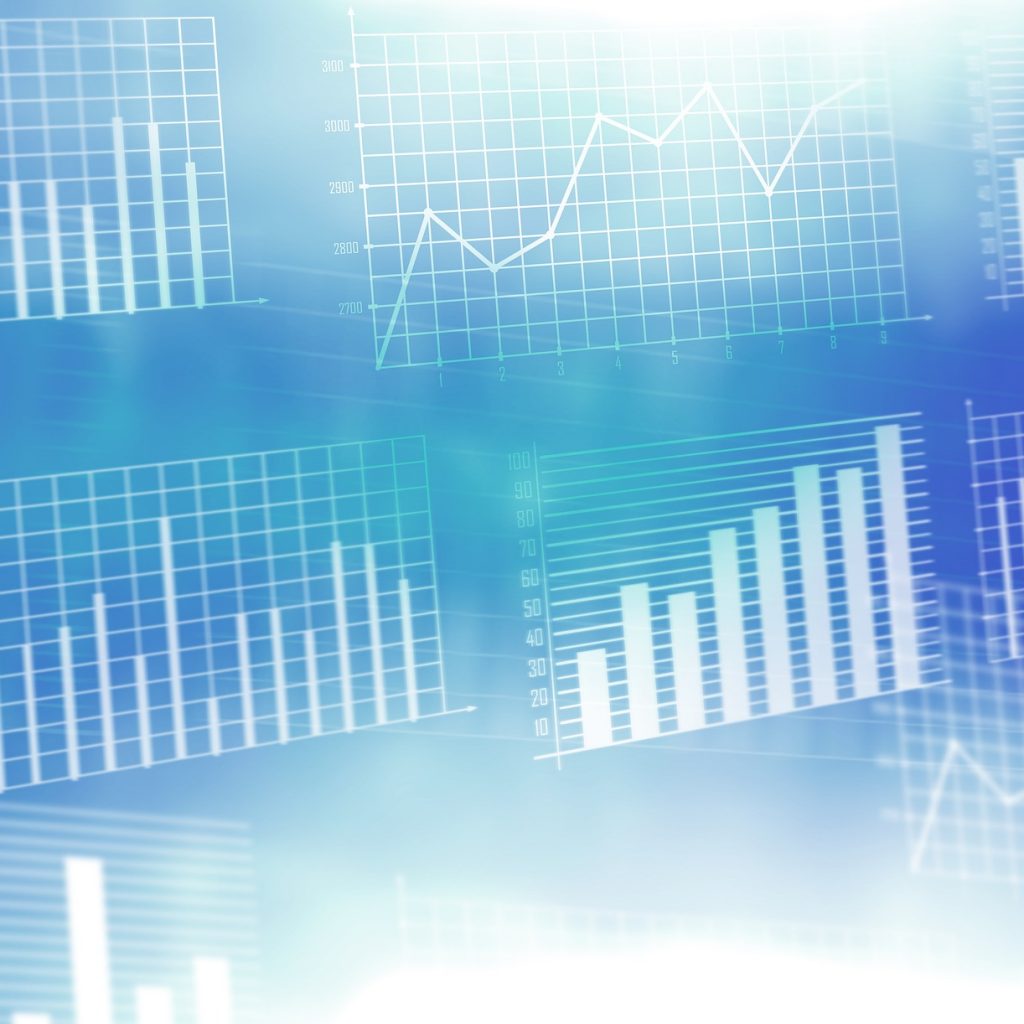HWWI commodity price index continues to rise in July
- HWWI commodity price index increases by 5.8 % (US dollar base)
- Crude oil prices rise by 6.1 %
- Slight increase of 1.4 % in prices for food and beverages
(Hamburg, August 14, 2020) Prices on the international commodity markets, which collapsed sharply in spring due to the corona pandemic, continued to recover in July. All sub-indices of the HWWI commodity price index rose on average compared with the previous month. However, the previous year’s figures are still far from being reached, which can be explained in particular by the sharp drop in crude oil prices. In July 2020, the index for energy commodities was still more than 30% below the level of July 2019, whereas the prices for industrial metals have recovered significantly and in some cases exceeded the pre-corona level.
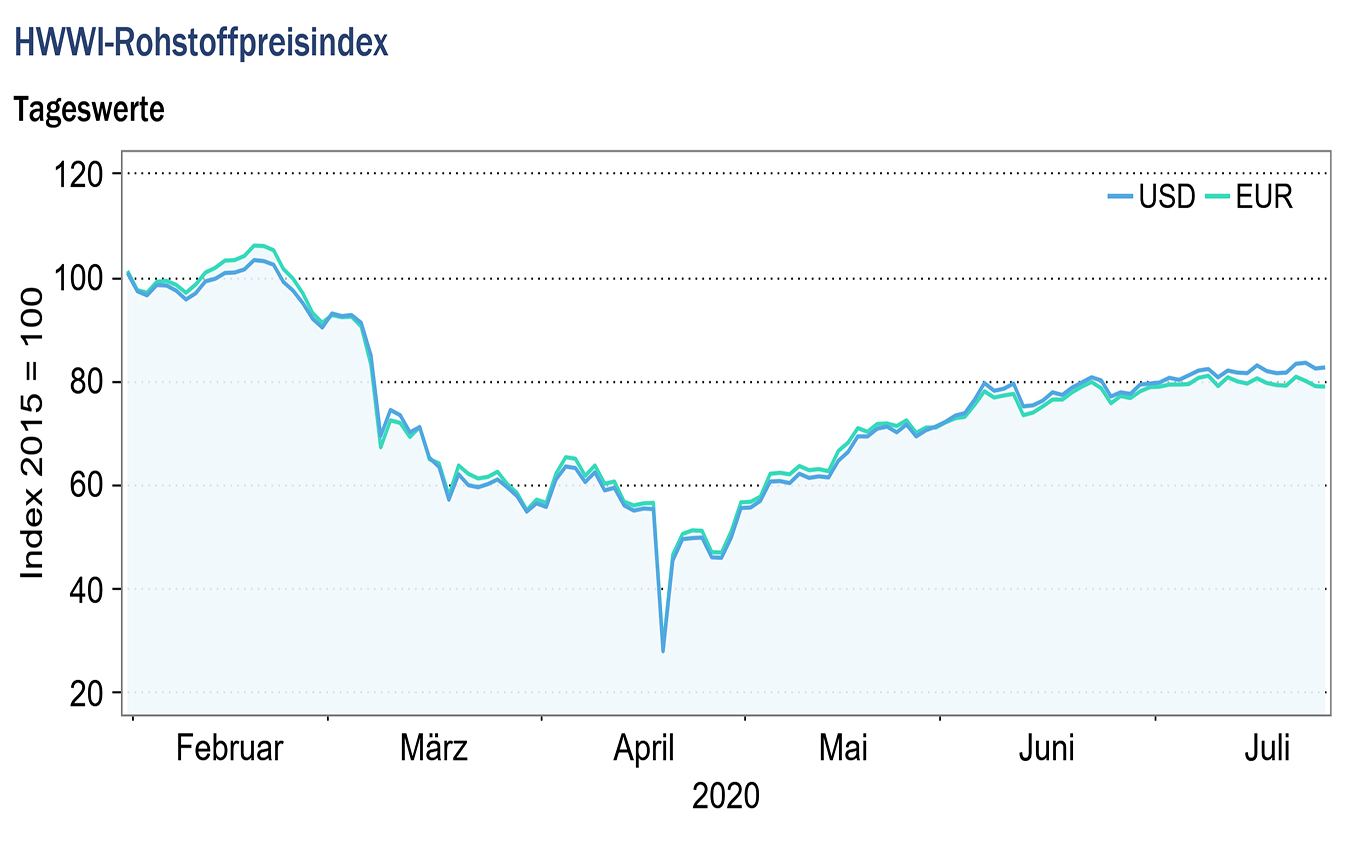
Index for energy raw materials: +6.1 % (euro base: +4.1 %)
The OPEC+ countries agreed to cut production by 9.7 million barrels per day for a further month. Initially, the historic production cuts were only planned for May and June, but it became clear that further cuts were still necessary to support the sharply fallen prices. The production cuts thus also stabilised the oil price in July and compensated for the collapse in demand worldwide due to the corona crisis. In addition to the sharply reduced supply from OPEC+, the demand for crude oil also rose in July. The rapid recovery of the Chinese economy and also the easing of lockdown measures in many European countries and in the USA increased the demand for crude oil. Overall, the price of crude oil rose on average in July and the European benchmark Brent recorded values of around US$ 40 per barrel. However, since local COVID-19 outbreaks are again occurring worldwide and further containment measures are therefore required, the future development of crude oil demand remains uncertain. Rising numbers of infections, particularly in the USA, increase the probability of a major lockdown, which would have a negative impact on the global economy and thus on the demand for crude oil.
In contrast to crude oil prices, coal prices continued their downward trend in July. The reduced demand for electricity due to the decline in industry production has not yet fully recovered. Moreover, the corona crisis has shifted the electricity mix further in the direction of renewable energy, so that coal is currently less in demand. European and American natural gas prices rose on average in July, with the price of European natural gas showing the steepest increase.
Overall, the sub-index for energy raw materials rose by 6.1 % (euro base: +4.1 %) to 77.1 points (euro base: 74.7 points).
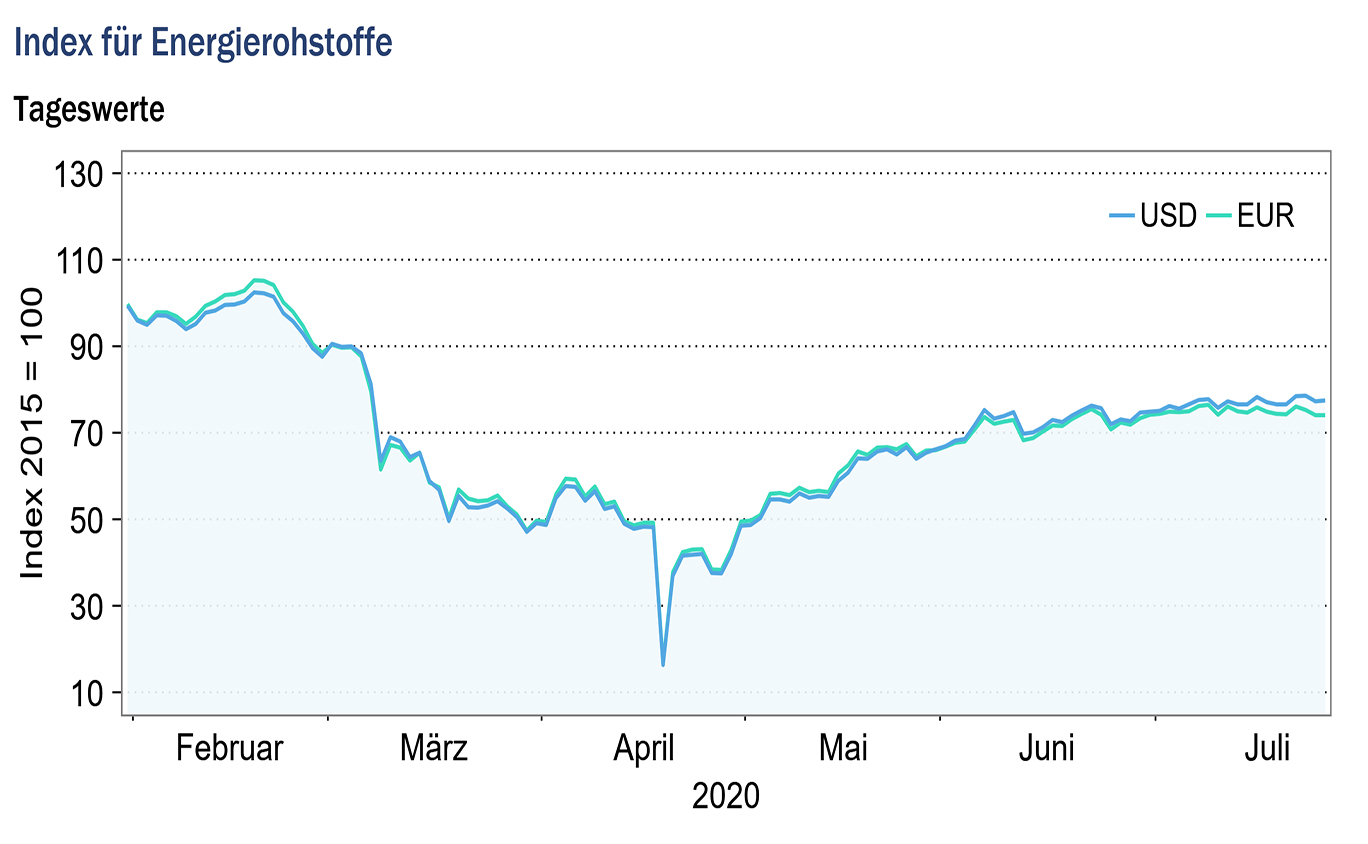
Industrial raw materials index: +6.2 % (Euro base: +4.3 %)
The sub-index for industrial raw materials is divided into the index for agricultural raw materials, the index for non-ferrous metals and the index for iron ore and steel scrap. Since the lows reached in March due to the lockdown of the Chinese economy, prices for industrial metals have been rising again. Prices for base metals are closely linked to the development of the global economy and in particular to the development of the Chinese industry. The rapid recovery of the Chinese industry led to increased demand, particularly in the markets for zinc, copper and nickel, and thus to price increases. The copper price rose by 10% in July compared with the previous month and has already exceeded the pre-corona level. The positive development of the copper price, which is often seen as an indicator of the state of the global economy, may point to a rapid recovery of the global economy. In addition, it is possible that the increased copper prices may reflect an increased supply risk due to the corona pandemic. Chile, the second largest copper producer worldwide, is currently struggling with rising numbers of corona infections. Should further lockdown measures be introduced in Chile, which would also affect the copper mines, this would lead to a sharp decline in supply.
Overall, the index for industrial raw materials rose by 6.2 % (euro base: +4.3 %) to 128.4 points (euro base: 124.3 points) on a monthly average.
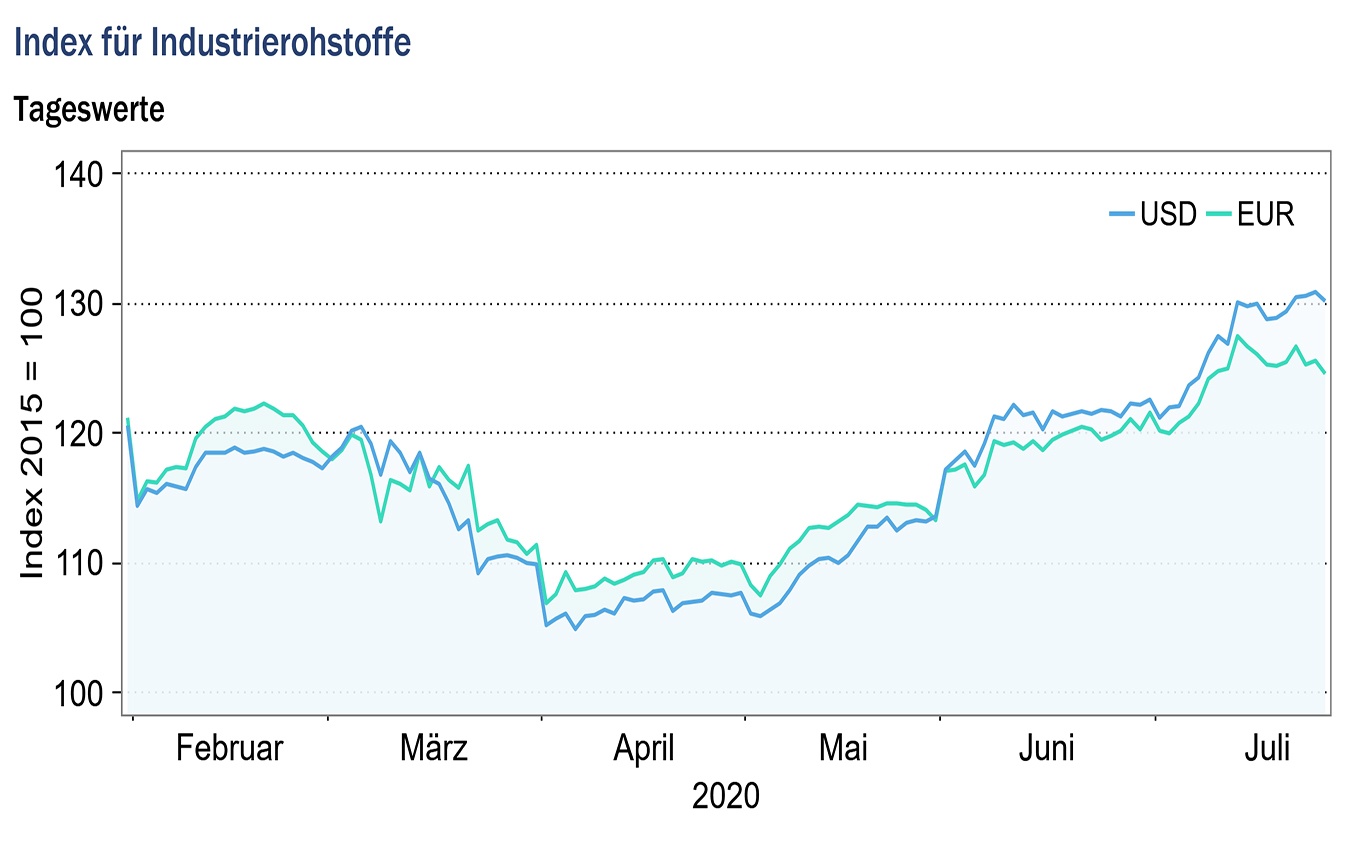
Food and beverages index: +1.4 % (euro base: -0.4 %)
A recovery in prices was also observed on the agricultural commodity markets. Rice prices, which rose during the peak phase of the global shutdown due to feared supply shortages, fell again in July. In addition to declining demand, the easing of lockdown measures in producer countries and positive harvest expectations took the pressure off rice prices. Sugar prices also recovered further in July, after reaching a 10-year low in April. Due to the close dependence of the sugar price on the price of crude oil, caused by the high importance of sugar for the production of biodiesel, the price of sugar also rose in line with the price increases on the crude oil markets. Tea prices are still influenced by the corona pandemic and the lockdown measures in India. In addition, poor weather conditions in the growing regions led to supply shortages, which together with an increase in demand resulted in rising tea prices. In contrast, the price of cocoa fell in July, as the poor economic situation also reduced demand for luxury foods as chocolate. Since the markets for food and beverages showed opposing trends in July, the sub-index rose only slightly compared to the other indices.
Overall, the index for food and beverages rose by 1.4 % (euro base: -0.4 %) on a monthly average to 89.3 points (euro base: 86.5 points).
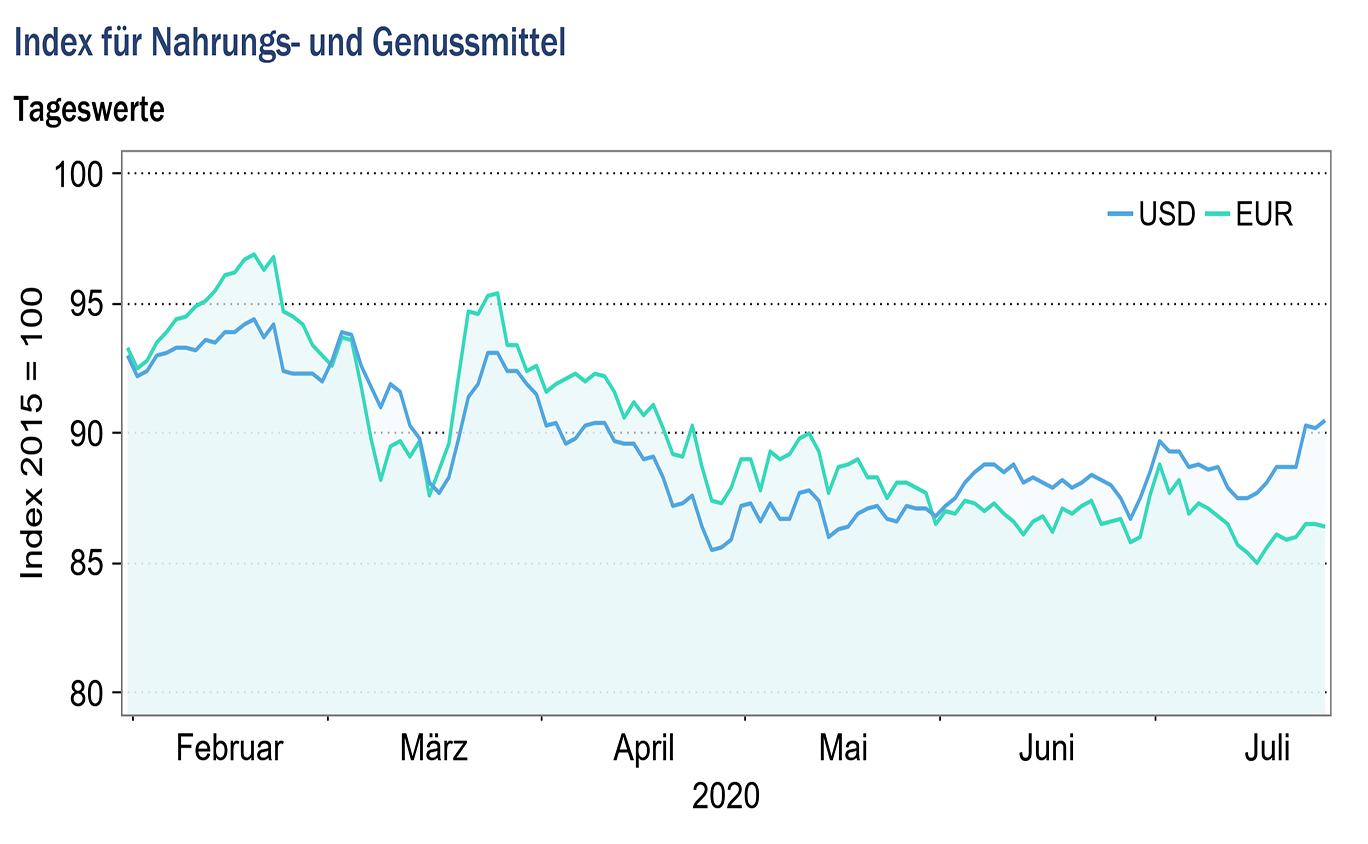
Source: www.hwwi.org
